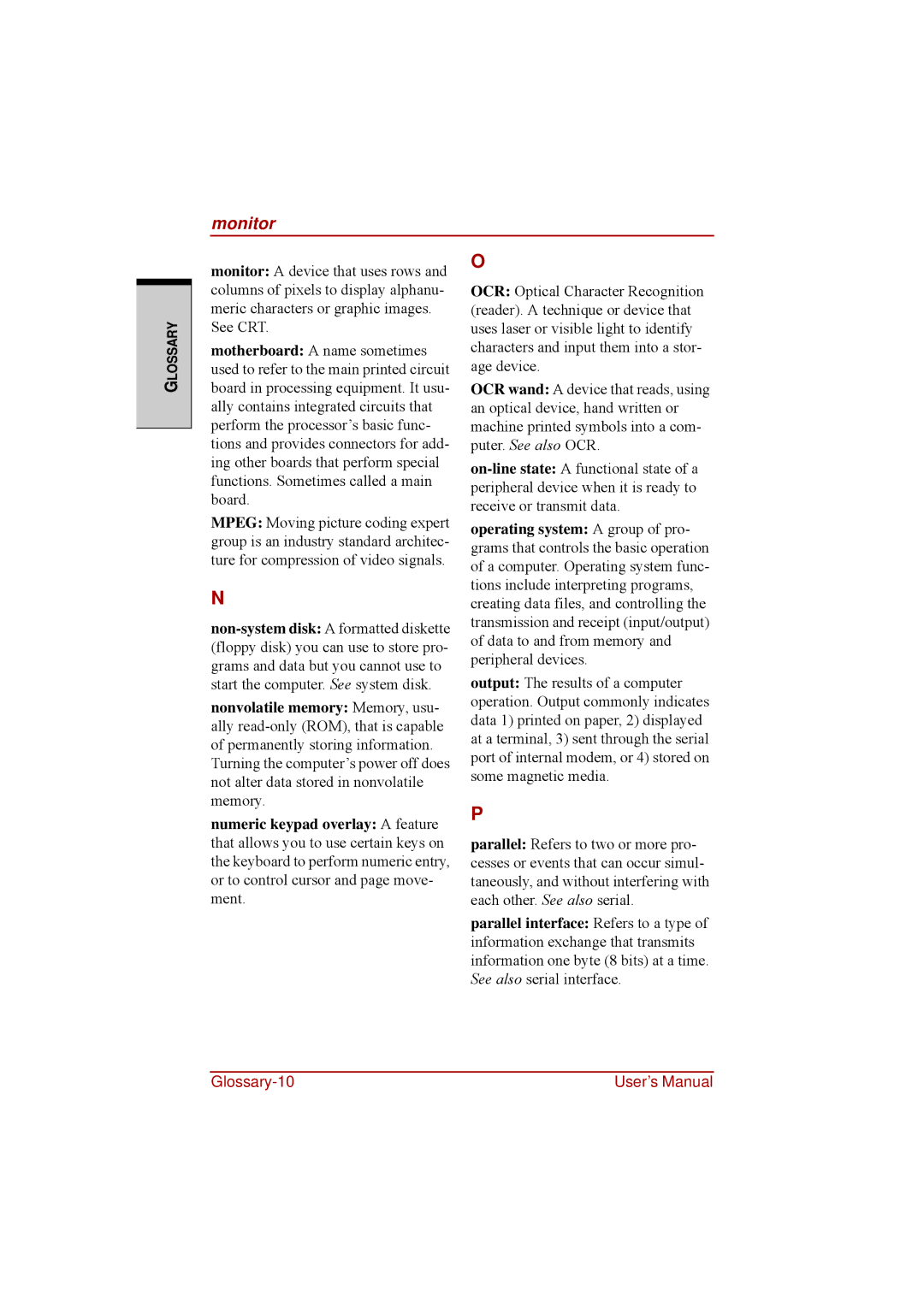
monitor
GLOSSARY |
monitor: A device that uses rows and columns of pixels to display alphanu- meric characters or graphic images.
See CRT.
motherboard: A name sometimes used to refer to the main printed circuit board in processing equipment. It usu- ally contains integrated circuits that perform the processor’s basic func- tions and provides connectors for add- ing other boards that perform special functions. Sometimes called a main board.
MPEG: Moving picture coding expert group is an industry standard architec- ture for compression of video signals.
N
nonvolatile memory: Memory, usu- ally
Turning the computer’s power off does not alter data stored in nonvolatile memory.
numeric keypad overlay: A feature that allows you to use certain keys on the keyboard to perform numeric entry, or to control cursor and page move- ment.
O
OCR: Optical Character Recognition (reader). A technique or device that uses laser or visible light to identify characters and input them into a stor- age device.
OCR wand: A device that reads, using an optical device, hand written or machine printed symbols into a com- puter. See also OCR.
operating system: A group of pro- grams that controls the basic operation of a computer. Operating system func- tions include interpreting programs, creating data files, and controlling the transmission and receipt (input/output) of data to and from memory and peripheral devices.
output: The results of a computer operation. Output commonly indicates data 1) printed on paper, 2) displayed at a terminal, 3) sent through the serial port of internal modem, or 4) stored on some magnetic media.
P
parallel: Refers to two or more pro- cesses or events that can occur simul- taneously, and without interfering with each other. See also serial.
parallel interface: Refers to a type of information exchange that transmits information one byte (8 bits) at a time. See also serial interface.
User’s Manual |
